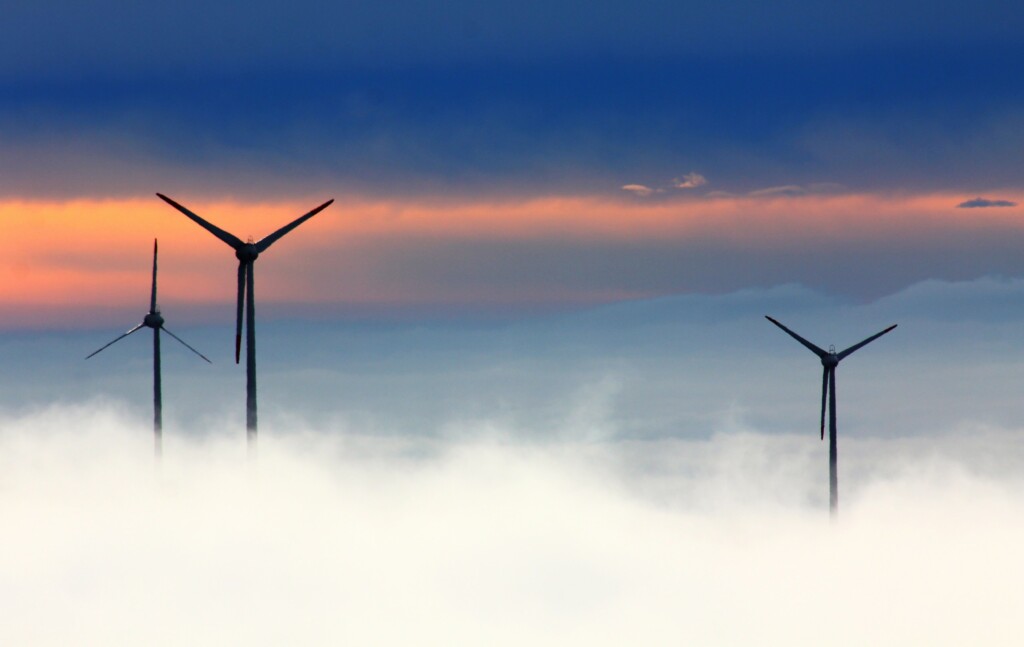The Journey Towards Renewable Energy and Climate-Friendly Solutions Continues
The goal set by the Finnish Government as stated in the 2019 Government Programme is that Finland will become carbon neutral by 2035 and carbon negative shortly thereafter. As a result, the political atmosphere is in general aiming towards more environmental and climate-friendly solutions in every political and industrial sector. The Russian aggression in Ukraine has further accelerated the green transition, as the ability to produce energy from CO2-free sources has become vital not only from a climate point of view, but also from the perspectives of energy self-sufficiency and security of supply.
More efficient energy production with lower emissions is required to adapt to climate change and green transition, which in general will require new technologies and raw materials. Thus, green transition impacts the mining of minerals, which to some extent are considered critical for the green transition. Recent crises and the uncertainty caused by them have increased the importance of availability of raw materials and self-sufficiency in them as well as the need to diversify supply chains.
Finland will hold parliamentary elections in the Spring of 2023, as a result of which many of the pending legislative reforms are currently on hold. As the importance of the green transition has widely been recognised across the political spectrum, however, it is expected to remain one of the top priorities on the political agenda even during the upcoming period of governmental change.
Renewable Energy – the Rise of Offshore Wind Power, Solar Power and Hydrogen
According to statistics provided by Finnish Energy, wind power production increased by 41% in 2022 compared to 2021, setting a new record for annual production at 11.56 TWh, which amounts to 14.1% of the total electricity production in Finland. The rising trend of wind power production in Finland is, however, better illustrated by the installed overall capacity, which increased by as much as 76% in 2022. Also on a more general level, the share of renewable energy sources amounted to 54% and the share of carbon-neutral energy sources to 89% of the total electricity production in 2021: both new records. The lack of a subsidy scheme for wind power has driven a rapid growth of the market for long-term private Power Purchase Agreements (PPAs), which is constantly expanding and now includes a broad spectrum of off-takers, from industrial operators to municipal utilities.
The vast majority of Finnish renewables projects are still onshore wind projects. However, 2022 saw an important milestone for offshore wind power development, as Metsähallitus (the Finnish State-owned enterprise that administers State-owned land and water areas), subsequent to a bidding contest involving some of the major European offshore wind power developers, entered into a joint venture with the Swedish utility Vattenfall regarding the co-development of a 1.3 GW offshore wind power project situated within State-owned waters in the municipality of Korsnäs in Western Finland. Finland has vast offshore areas with a significant, yet unexploited, wind power production capacity, and the Korsnäs project is the first step in what is generally expected to become the next breakthrough in the Finnish energy sector. The shallow nature of the Baltic Sea would make it an attractive location for large-scale offshore wind projects. Offshore wind power has also been recognised by the Finnish Government as one of the key elements in Finland’s climate strategy, and accordingly further State-owned offshore areas (administered by Metsähallitus) will be leased out for wind power development through an auction process. The first auction round is anticipated to be launched in the fall of 2023. The winner(s) of the auction(s) would be granted a lease right to the area(s) for a period of 40 to 50 years and exclusivity on project development, permitting, construction and production of electricity in the area. Offshore wind power developers are also showing an increasing interest in the economic zone, which, however, lacks wind power-specific legislation as concerns, for instance, securing an exclusive right to develop.
One of the obstacles for the development of Finnish offshore wind thus far has been that the property tax applicable to wind power plants is calculated based on the construction costs, which are significantly higher for offshore wind farms when compared to onshore wind farms, resulting in a higher property tax burden compared to onshore wind farms. However, in order to make offshore wind projects commercially viable, the Finnish Government aims to correct the situation, and a Government Proposal has been issued according to which the replacement value of offshore wind power plants would be lowered to 35% of their original construction costs (compared to 75% for onshore wind power). If adopted by the new government, the amendment would significantly reduce the tax burden of offshore wind power and further accelerate investments in the sector.
The development of the solar PV sector has so far lagged behind wind power partly due to the Finnish climate. However, the first signs of a transition from small-scale test projects to industrial-scale commercial projects have been seen during the past two years. In addition to rooftop solutions, which have been applied in connection with, for example, large retail facilities, an increasing number of larger solar farms are currently being planned on former industrial sites and even on forest-based areas. The acceleration of solar power development will also require certain legislative reforms, notably with regard to the taxation of solar power plants.
As in most European countries, green hydrogen is a widely discussed topic in Finland, and the Finnish Government has recently adopted a resolution according to which it aims to make Finland become a leading European hydrogen power by producing at least 10% of the EU’s greenhouse emissions-free hydrogen by 2030. There are several significant hydrogen projects in the pipeline, which are scheduled to be commissioned within the next few years and will require significant finance raising in the coming years. The legislation regarding green hydrogen is still under development, and to a large extent driven by the European Union. The most critical legal questions, such as the criteria of green hydrogen, taxation and possible State aid mechanisms, will therefore depend on the development of the legislation at the EU level.
As a final thought, as many Finnish cities are still dependent on coal for heating especially in winter, thermal energy storages (that store surplus energy generated in the summer for use during the winter) as well as small modular reactors (SMRs) are currently investigated as a potential solution for accelerating the transition to carbon-free heating. Vantaa Energia, the municipal utility for the Vantaa city region is currently developing the world’s largest cavern thermal energy storage of 1,000,000 m3 in size, which will have a storage capacity of 90 GWh of energy – the annual heat consumption of a medium-sized town. The total project cost is approximately EUR100 million. In addition, the Finnish Radiation and Nuclear Safety Authority is currently conducting a study on how to simplify the permitting processes of SMRs, as the current nuclear safety legislation has been designed with regard to large-scale nuclear power plants and is therefore poorly applicable to SMRs. The current estimate is that the first SMRs in Finland would be operational within ten years.
Mining sector – Reform of the Mining Act and the new Mining Tax Act taking effect
According to the statistics published by the Finnish Safety and Chemicals Agency (Tukes) in March 2023, in 2022 there were 9 metallic mineral mines, 26 industrial mineral mines and 8 industrial rock or other mines operating in Finland. Metal ore, carbonate rock, industrial minerals and industrial rock mining was in total 49.6 million tonnes (3.5% increase from year 2021). The total amount of investment into Finnish mines was EUR304 million. Ore exploration received EUR80.4 million in investments, which means a 17.4% increase from year 2021. This shows that there is a lot of interest in Finland’s mineral potential (such as battery minerals). In the report on the mining industry published by the Ministry of Employment and the Economy in October 2022, Finland was reported to be the only country in the EU with mines producing chrome and cobalt and within the EU by far the most significant producer of platinum group metals, clearly the most significant producer of nickel and, among Bulgaria and Sweden, the most significant producer of gold.
The Parliament has on 20 February 2023 approved the Government Proposal on reform of the Mining Act which will take effect on 1 June 2023. The aim of the reform is to improve the level of environmental protection and ensure the operating conditions of mines, while also improving opportunities for local input (for example from municipalities and landowners). It will take effect simultaneously with the new Nature Protection Act. Changes to the Mining Act include, inter alia, changes to the validity period of reservation and reservation fees, changes to prerequisites to extend the validity of an exploration permit and changes to the prerequisites for the award of a mining permit as well as stricter regulations on mining collaterals and changes to regulations regarding closure of the mine.
The Parliament has on 10 February 2023 approved the Government Proposal on the Mining Tax Act which will take effect on 1 January 2024. The Mining Tax Act will be applied for mining of minerals referred to in the Mining Act, except minerals found in gold panning. The mining company, as a holder of the mining permit, will be liable to pay mining tax. The obligation to pay mining tax will arise for metallic minerals (Ag, Co, Cr, Au, Cu, Li, Ni, Pd, Pt, Zn, Pb, U) at the time when the mining mineral is delivered for enrichment and for other mining minerals at the time of extraction. The tax for metal ore is 0.6% of the ore’s taxable value. The Tax Administration will assess taxable values annually based on arithmetic means on previous years, with international prices using sources such as LME Monthly Overview and S&P Capital IQ. Tax for other mining minerals will be EUR 0.20 per ton. The Mining operators must register with the Finnish Tax Administration before starting activities subject to the mining tax. Existing operators must register as mining operators by 1 March 2024. The tax period of the mining tax is the calendar year and therefore the first tax return must be filed, and the tax paid by 12 March 2025.The revenue collected from the mining tax is estimated to be around EUR25 million annually, of which 60% will be directed to municipalities where the mines are located and 40% to the State.
More information:
Kari Marttinen
Partner
+358 40 779 7878
kari.marttinen@hpp.fi
Tarja Pirinen
Partner
+358 40 350 7797
tarja.pirinen@hpp.fi
Marius af Schultén
Partner
+358 40 565 7034
marius.schulten@hpp.fi
Björn Nykvist
Partner
+358 40 753 7387
bjorn.nykvist@hpp.fi






